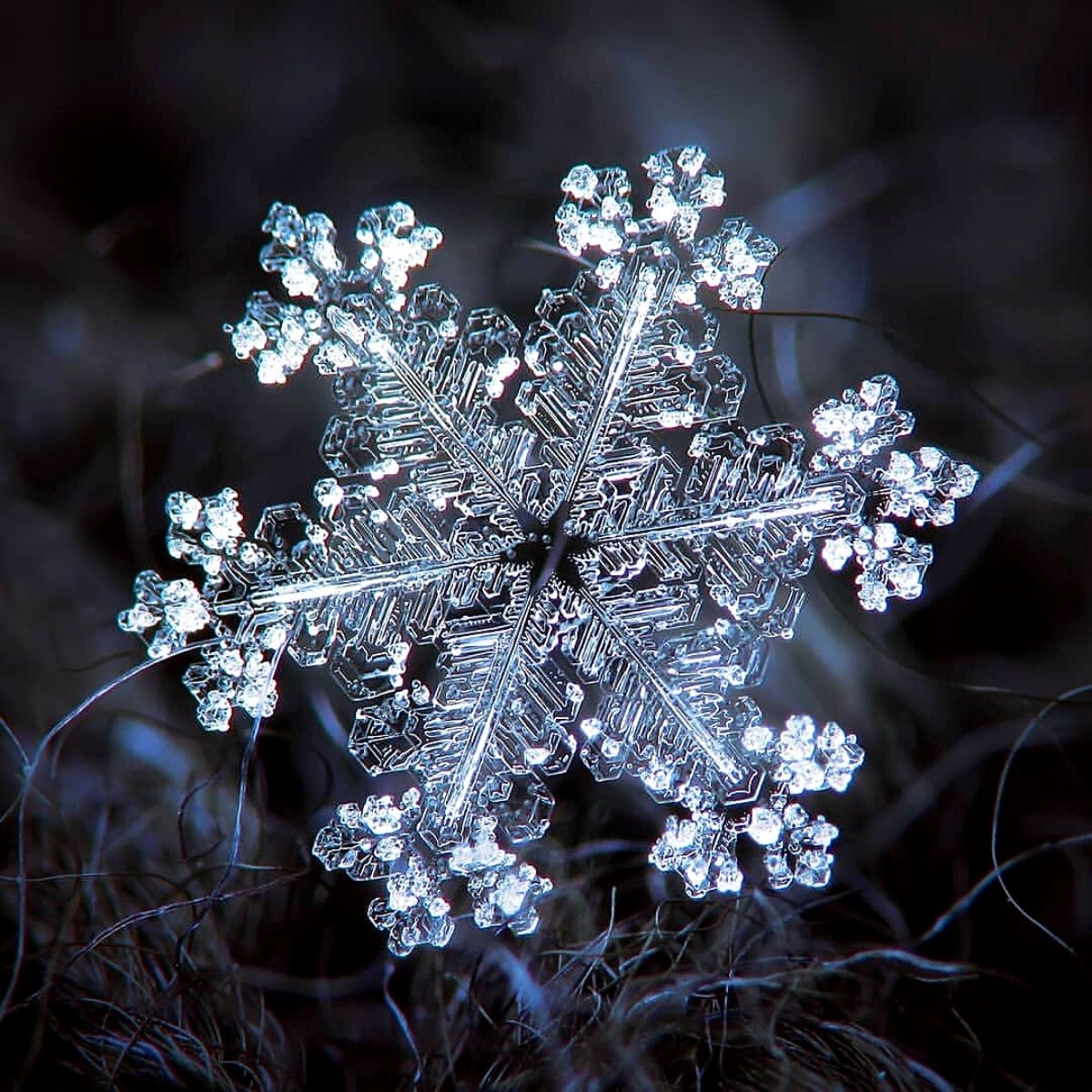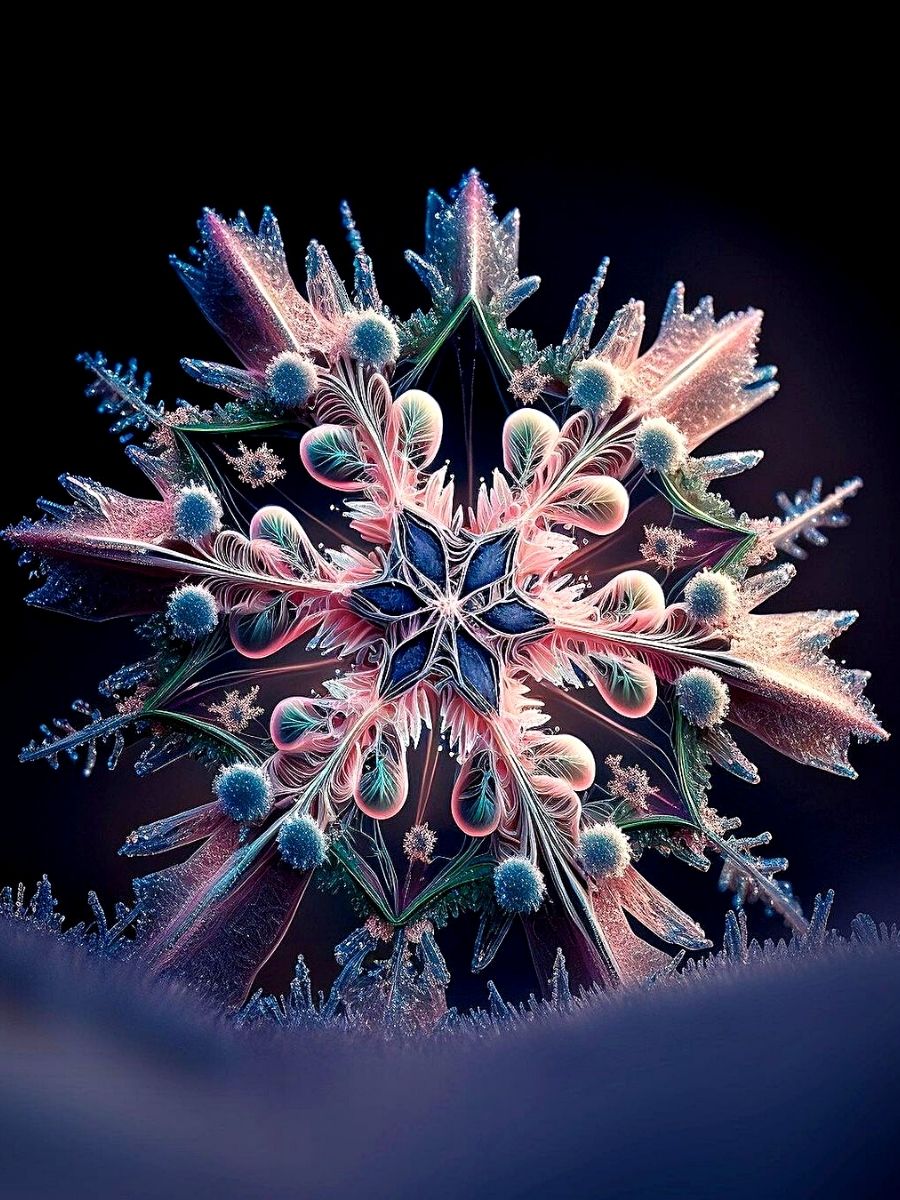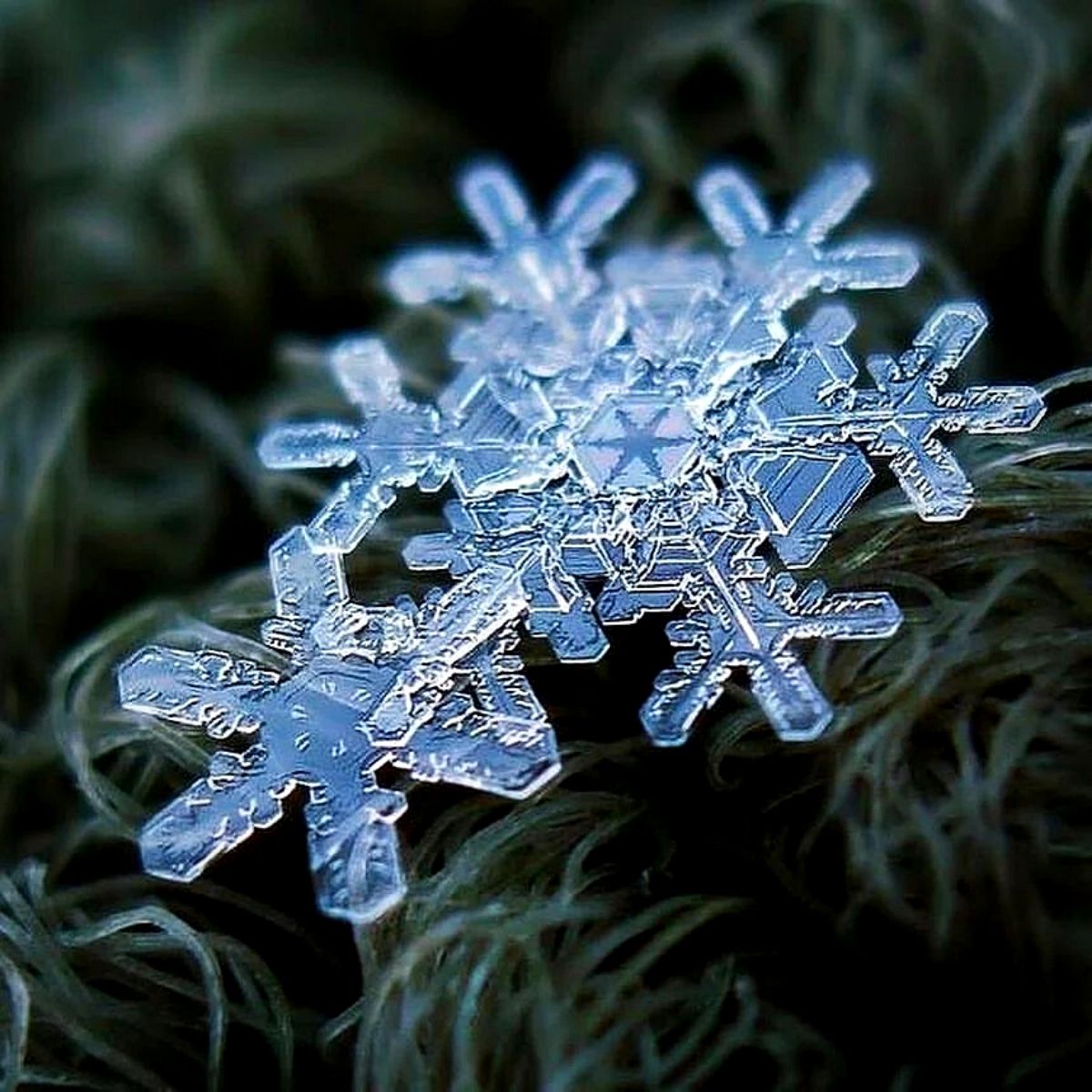There are few subjects as captivating and intricate as snowflakes when it comes to nature photography. These delicate ice crystals, each with its own unique pattern, have fascinated scientists and artists for centuries. Alexey Kljatov is one among the numerous photographers exploring the beauty of snowflakes through his photography works.
Through his exceptional skill and innovative techniques, Kljatov has managed to capture these ephemeral elements in unique photography, revealing their stunning complexity and the enchanting allure that they possess. In essence, Kljatov's snowflake photography explores the formation of snowflakes and their remarkable beauty.
How Are Snowflakes Formed? Are There Any Two That Are Alike?
To truly appreciate the artistry behind Kljatov's snowflake photography, it is essential to first understand the fascinating process that gives rise to these complex ice crystals. Snowflakes are formed when water vapor freezes directly into ice without passing through the liquid phase. This process occurs in the upper layers of the earth's atmosphere, where temperatures are below freezing.

The shape of a snowflake evolves as it descends through different temperature and humidity zones. As the ice crystal grows, it develops branches and elaborate patterns, ultimately creating a unique shape that is truly one-of-a-kind. The elaborate formation of snowflakes is due to the specific arrangement of water molecules and the environmental conditions they encounter during their descent to the ground.
Just like humans - and even some flowers like daisies - no two snowflakes are alike. If closely examined, one realizes that each snowflake is unique in its own way. This happens during their formation, as the snowflake’s molecules arrange themselves into a distinctive six-sided honeycomb-like structure.

The six-sided shape is due to the way the hydrogen and oxygen atoms inside the molecules behave when they encounter other water molecules. They link up in a strict pattern known as six-fold symmetry, giving the basic snowflake template. This is why often snowflakes are associated with hexagons or six-pointed stars. That shape, however, keeps changing further as the snowflakes fall through the air.
Every snowflake in the world goes through a transformation as it descends from the sky. The encounter with water vapor in the atmosphere plays a significant role in shaping its delicate form.

When the humidity is low, and there is a scarcity of water vapor in the air, snowflakes take on a distinct shape known as ‘plates.’ These are flat hexagonal structures that reveal their intricate details when observed under a microscope. The absence of abundant water vapor restricts the growth of branches and produces these elegant plate-like formations.
Conversely, in an environment with high humidity where water vapor is abundant, a fascinating process called branching occurs. The water molecules arrange themselves in linear formations known as dendrites, extending outward in various directions.

This branching creates the familiar star-like patterns frequently seen on Christmas decorations. Additionally, higher humidity levels contribute to the formation of larger snowflakes, as the increased water vapor provides more material for the flakes to accumulate.
Hence, due to the ever-changing conditions they encounter during their journey through the atmosphere, no two snowflakes are identical. Even if two flakes happen to float side by side, they will experience varying levels of humidity and encounter different amounts of water vapor. These unique conditions shape each snowflake into a distinct and unmatched work of art.

Kljatov's Innovative Snowflake Photography Technique
Individual snowflakes are difficult to see with the naked eye. In 1885, Wilson Bentley, a scientist devised a clever way of attaching his camera to a microscope to enable him to take photographs of snowflakes in greater detail than ever before. This proved even more that no two snowflakes are the same.
Kljatov, who hails from Moscow, has in almost the same way perfected the art of capturing the transient beauty of snowflakes. What sets Kljatov’s works apart from any other such photographers is his ingenious use of Soviet-made lenses and a homemade camera setup to achieve exceptional macro photography.

He explains his interest in snowflake photography:
“Like many beginners, I started photography with flowers and ladybugs and didn’t even think of trying anything else for several years. But one day, I saw two shots of snowflakes on the internet (unfortunately, I do not remember the photographer’s name) and was amazed by their cold, crystal-like beauty. The following winter, I started shooting snowflakes. In the beginning, I made many mistakes. My early snowflake shots were terrible, but I was happy, because I was seeing snowflake shapes and patterns, which I hadn't seen before.”
Thus, using an old camera lens mounted in reverse, Kljatov creates a powerful macro lens capable of capturing the minute details of individual snowflakes. This innovative technique allows him to magnify the delicate structures, revealing their mesmerizing complexity. His homemade setup also incorporates a dark background, which further accentuates the intricate details of the snowflakes and creates a striking contrast
Floral photographer Paul Heijmink explains why black (dark) backgrounds are ideal for flower photography.

For a snowflake photographer, capturing the elaborate beauty of snowflakes is no easy task. It requires patience, precision, and a deep understanding of the unique challenges posed by these tiny frozen masterpieces. And this patience, Kljatov strives to maintain.
During his shoots, with his homemade camera setup in hand, Kljatov carefully positions the snowflake on a dark background, ensuring that the lighting is just right to highlight its delicate features. He then swiftly captures a series of photographs, making minute adjustments to achieve the desired focus and composition. This keenness and attention to detail yield spectacular results, with each photograph showcasing the complex beauty and individuality of the captured snowflake.

The Artistry of Snowflake Photography
Kljatov's snowflake photography is not just a scientific exploration; it is a work of art as through his lens, he reveals the hidden details of these fleeting ice crystals. His photography beckons audiences to marvel at the delicate beauty of the snowflakes, as the photographs capture and tell a unique tale of how the icy particle was formed.
His photography portfolio showcases an impressive array of snowflakes, from simple and symmetrical to complex and asymmetrical structures. The photographs seemingly transport the audience into a miniature world of ethereal elegance.

With the photographs, his artistry in turn goes a long way in showing the finer ins and outs of nature, as well as the transient quality of some of its core elements.
Photos by @alexey_kljatov










